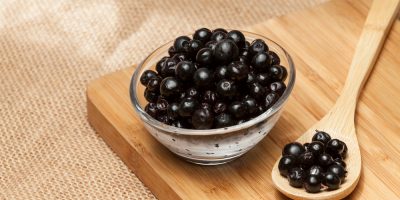Chemical, antimicrobial, and molecular characterization of mortiño (Vaccinium floribundum Kunth) fruits and leaves

Author: Susana Llivisaca, 1 Patricia Manzano, 1 , 2 Jenny Ruales, 3 José Flores, 1 , 2 Joffre Mendoza, 1 Esther Peralta, 1 and Juan M. Cevallos‐Cevallos
Fruits and leaves of Vaccinium spp. are known for their high content of bioactive compounds, but the chemical and biological characteristics of mortiño (Vaccinium floribundum Kunth) have not been fully described. In this study, the levels of polyphenols, antioxidant capacity, anthocyanins, antimicrobial activity, and genetic variability were determined in mortiño plants. The Folin–Ciocalteu’s, ABTS scavenging, pH differential, and well diffusion methods were used to evaluate the levels of polyphenols, antioxidant capacity, anthocyanins, and antimicrobial activity, respectively. The genetic variability was evaluated by sequencing of the matK and rbcl DNA regions. Polyphenol content was up to 229.81 mg gallic acid equivalents/100 g, the average antioxidant capacity was 11.01 mmol Trolox equivalents/100 g, and anthocyanin content was up to 1,095.39 mg/100 g. Mortiño extracts significantly inhibited the growth of Gram‐negative bacteria including Burkholderia gladioli, Burkholderia cepacia, Salmonella Typhimurium, Vibrio parahaemolyticus, Vibrio harveyi, Vibrio vulnificus, Escherichia coli, and Pseudomona aeruginosa, as well as Gram‐positive bacteria such as Probionibacterium propionicum, Staphylococcus aureus, and Enterococcus faecalis showing greater inhibition halos than those produced by the antibiotic ampicillin. A polymorphic nucleotide was found in position 739 of the matK region. This study shows the potential of mortiño for the food and pharmaceutical industries.
